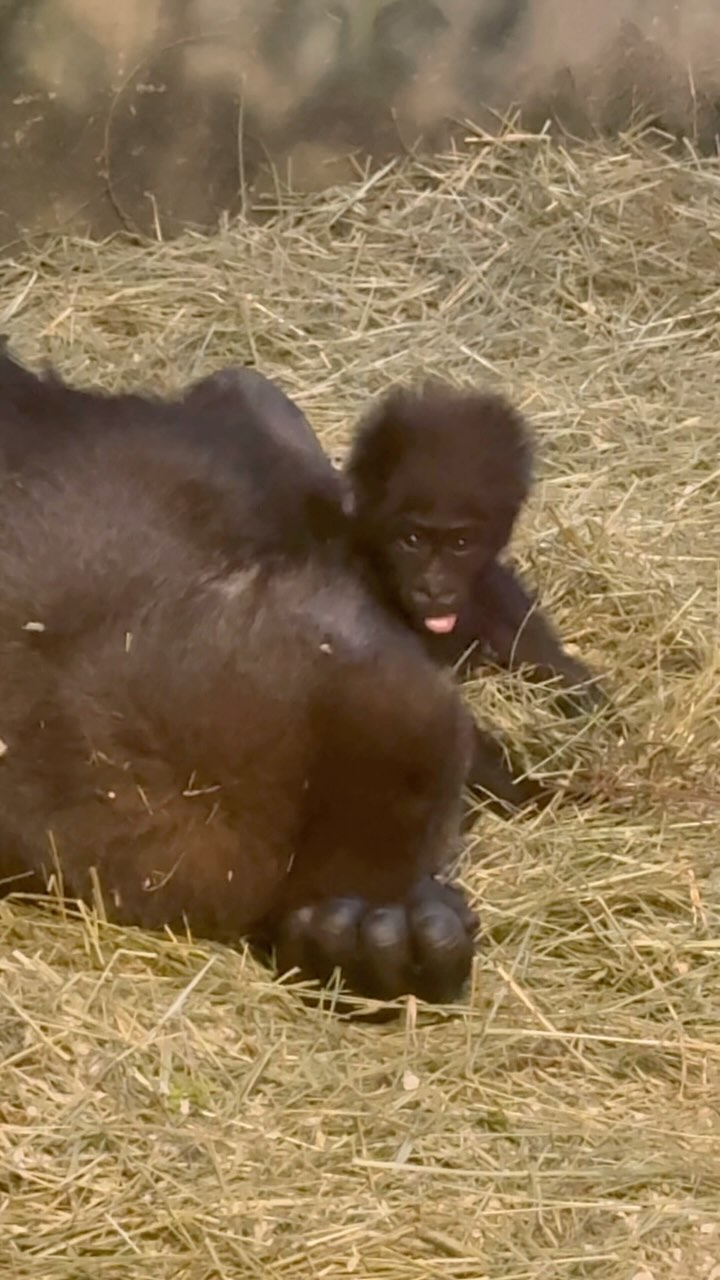- Introduction to baby Addo and visit details
- Developmental milestones of gorillas
- Importance of motherly care and social bonds in gorilla groups
- The role of zoos in wildlife conservation and education
- Visiting hours and activities for baby Addo in the zoo
Gorillas are remarkable creatures, capturing the hearts and curiosity of zoo visitors worldwide. Baby Addo is a young gorilla who delights zoo-goers and provides an educational opportunity for people to learn about gorilla behavior and conservation efforts. On your next visit, you can see Addo in their outdoor habitat at 9 am and 11:15 am for snack time, and in their indoor habitats at 1:30 pm.
Gorilla developmental milestones mark significant stages where young gorillas, like humans, achieve growth and independence. Big boys sit up all on their own! …until mom says otherwise ☺️🦍 functions as a playful yet insightful way to describe early gorilla milestones and the crucial role of motherly care.
In the wild, a baby gorilla starts to exhibit significant developmental changes essential for survival. One of the first major milestones is the ability to sit up independently, typically around three to four months of age. This physical advancement is not just a marker of growth but is critical for the young gorilla to explore its environment more effectively. However, it’s crucial to note that while young gorillas gain more independence as they grow, they rely heavily on their mothers for guidance and protection.
Motherly care is indispensable for gorillas’ social and emotional development. The bond between a mother and her infant gorilla is remarkably strong. The mother provides continuous physical contact, nourishment, and teaching behaviors vital for the baby’s survival. This bond helps the baby learn essential skills such as foraging, social interaction, and recognizing potential threats. Even as young gorillas begin to sit up and explore independently, the mother’s influence remains a primary factor in their upbringing.
Zoos play a pivotal role in wildlife conservation, research, and education. They provide safe environments for animals, particularly endangered species, allowing for controlled breeding programs. These programs significantly contribute to preserving species that face threats from habitat loss, poaching, and other human activities. Furthermore, zoos serve as educational platforms where visitors can learn about wildlife, fostering a deeper appreciation and understanding of the natural world.
Visiting baby Addo offers a dual purpose: entertainment and education. By observing Addo during his designated outdoor and indoor times, visitors can witness firsthand the development and behaviors of a young gorilla. This experience brings joy and instills a sense of responsibility towards wildlife conservation.
In conclusion, baby Addo’s journey from infancy towards independence symbolizes more than just a young gorilla’s growth. It highlights the importance of maternal care, the invaluable role zoos play in species conservation, and the educational opportunities zoos offer the public. By understanding these aspects, visitors can appreciate the complexities of wildlife preservation and the dedication required to protect these magnificent creatures.
*****
Source Description
Big boys sit up all on their own! …until mom says otherwise ☺️🦍
Hoping to see baby Addo on your next zoo day? Visit him in their outdoor habitat at 9 am and 11:15 am for snack time, and in their indoor habitats at 1:30 pm ✨


